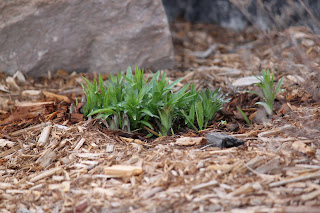We live in an area in the county that is a mixture of country residence, agriculture and crown land. Our south property line is one lot away from crown land (the Wapiti River Corridor, an area where hunting is prohibited) and our east property line is shared with a vacant 30 acre parcel of land that used to be hayed and has been left to grow wild with clover. Because of the abundant amount of food, our area is frequently visited by mule deer, moose, elk and many other animals.
Our acreage is also frequently visited by the deer. The Does and Fawns nibble on the grass, trees, eat out of the bird feeders and in the fall the Bucks like to rub on our trees. It’s nice to have them around but when they start to cause damage we wish they would go away.
 |
| April 2011, approx. 6 ft from the house |
 |
| Deer Rub on a Pine Tree |
Last year we were proactive with the garden and installed an electric fence in the spring. For the most part it kept the deer out. The first time a deer got into the garden she nibbled on the swiss chard, decided she didn’t like it and proceeded to eat the tops off the beets. Thankfully most of the beets survived and continued to grow. I blamed myself for this unauthorized entry because I forgot to turn the electric fence on the night before.
There were other occasions when they still gained entry to the garden when the fence was turned on, even after we doubled the amount of wire around the garden. Because of this, we are taking a different approach this year. We have bought “Deer Fence” from Lee Valley. It is a plastic ¾”mesh that is 7 feet tall and is designed to keep the deer out. We’ll see how this works. At least I won’t have to worry about forgetting to turn the fence on this year.
 |
| Deer Fence |
 |















